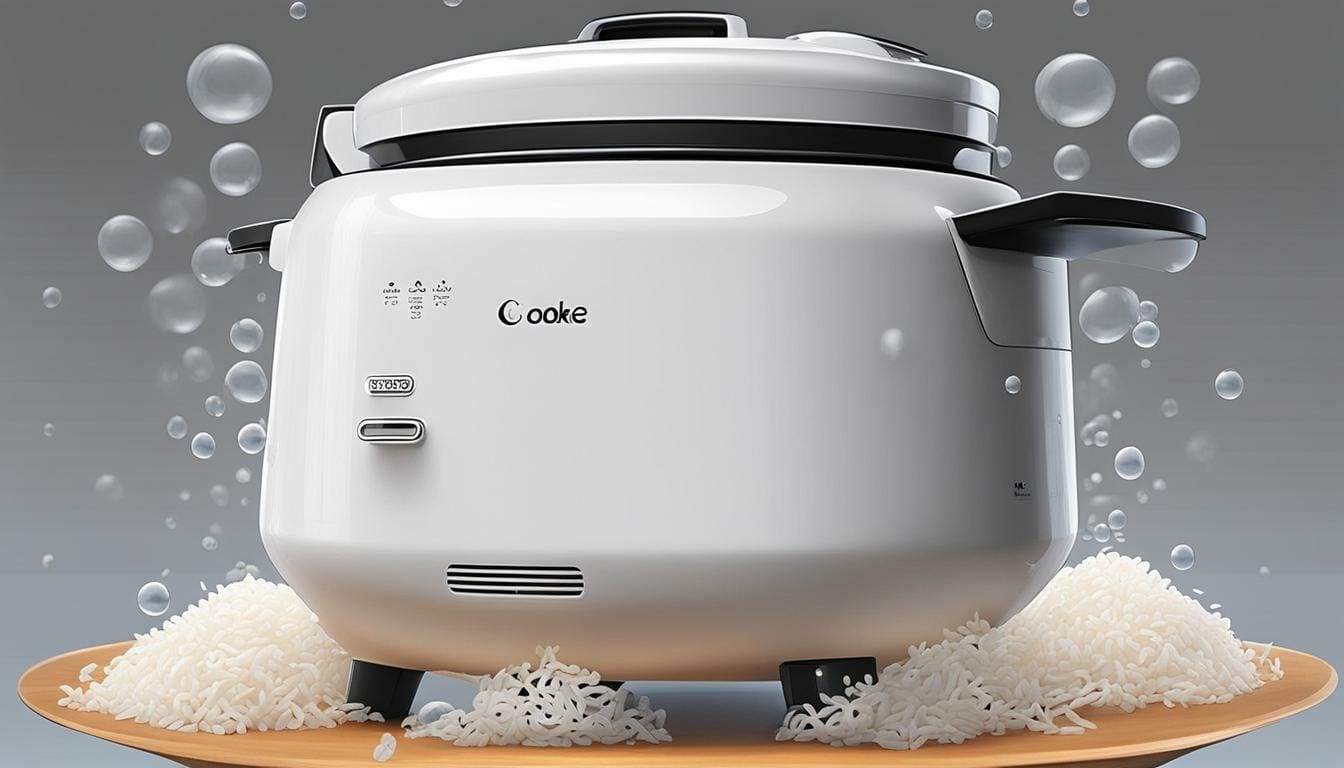Rice cookers are a staple in many kitchens, making the process of cooking rice effortless and efficient. However, you may have noticed that your rice cooker bubbles during the cooking process, leaving you wondering if this is normal. In this section, we will explore the question of whether rice cookers are supposed to bubble. We will also discuss common issues related to rice cookers bubbling and how it may affect the cooking process of your rice.
Key Takeaways:
- The bubbling you see in your rice cooker during the cooking process is normal, but excessive bubbling can indicate underlying issues.
- Factors such as excess water, incorrect rice-to-water ratios, and faulty seals can contribute to excessive bubbling in rice cookers.
- Understanding how rice cookers work, practicing proper maintenance, and following expert tips can help prevent excessive bubbling and ensure perfectly cooked rice every time.
How Rice Cookers Work
Before we dive into why rice cookers may bubble, let’s first discuss how they work. Rice cookers typically consist of an inner pot, an outer casing, and a heating element. When water and rice are added to the inner pot, the heating element is activated, and the water is brought to a boiling point. Once the water is fully absorbed by the rice, the cooker’s temperature sensor turns off the heating element, and the cooker switches to a warming mode.
The cooking process of rice involves two stages: absorption and steaming. During the absorption stage, the rice absorbs the water, and bubbling occurs as the water boils. As the absorption stage nears its end, the water level decreases, and the bubbling reduces. In the steaming stage, the rice continues to cook, and moisture is evenly distributed throughout the pot, ensuring fluffy and perfectly cooked rice.
Water and heat are critical elements in the cooking process of rice, and their precise measurement can determine the quality of the rice. Using too much water or heat can cause bubbling, leading to undercooked or overcooked rice.
Now that we understand how rice cookers work, let’s explore the reasons why they may bubble.
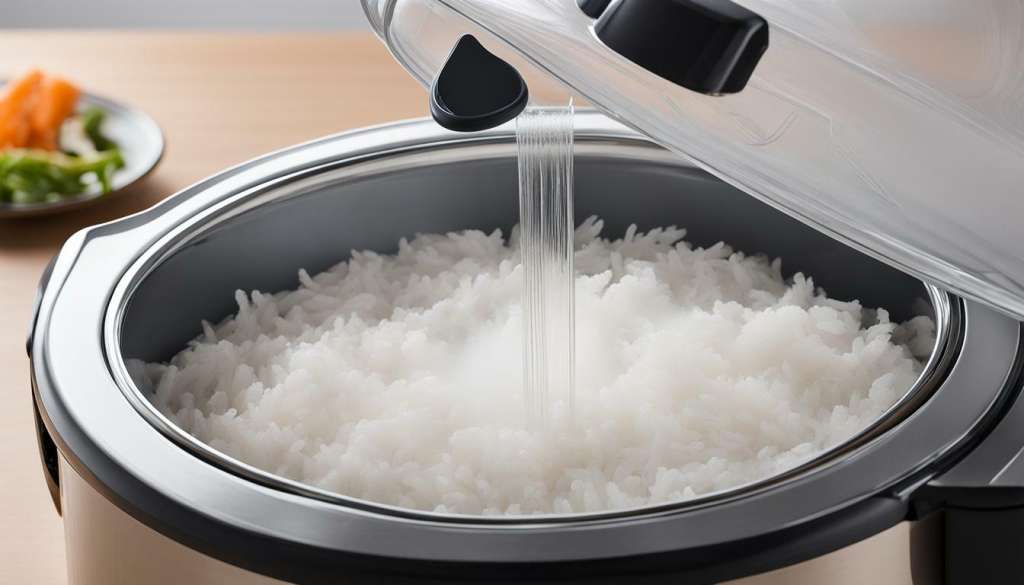
Common Causes of Rice Cooker Bubbling
Excessive bubbling in your rice cooker can be frustrating, but it’s important to understand the common causes of this issue. By identifying the root cause of the problem, you can take the necessary steps to fix it and ensure perfectly cooked rice.
Incorrect Rice-to-Water Ratios
One of the main causes of rice cooker bubbling is an incorrect rice-to-water ratio. Adding too much water to your rice cooker can cause it to bubble and boil over, creating a mess in your kitchen. To fix this issue, measure the correct amount of water for the type of rice you are cooking. Typically, a 1:1.5 rice-to-water ratio works well for most types of rice.
Excess Water
Using too much water in your rice cooker can also cause excessive bubbling. To prevent this, use a measuring cup to measure the exact amount of water needed for your rice. Additionally, avoid adding extra water after the rice has started cooking as this can cause the water to boil over.
Faulty Seals
A faulty seal on your rice cooker can also cause bubbling issues. Inspect the rubber gasket around the lid of your rice cooker for any cracks or signs of wear and tear. If you notice any issues, replace the gasket before using your rice cooker. Additionally, ensure that the lid is properly aligned and latched before starting the cooking process.
How to Fix Rice Cooker Bubbling
If you are experiencing issues with your rice cooker bubbling, there are a few ways to fix the problem. Firstly, reduce the amount of water you add to the cooker. You can also try stirring the rice during the cooking process to prevent bubbling. If the issue persists, try cleaning the rice cooker and ensuring that the lid is properly sealed before starting the cooking process.
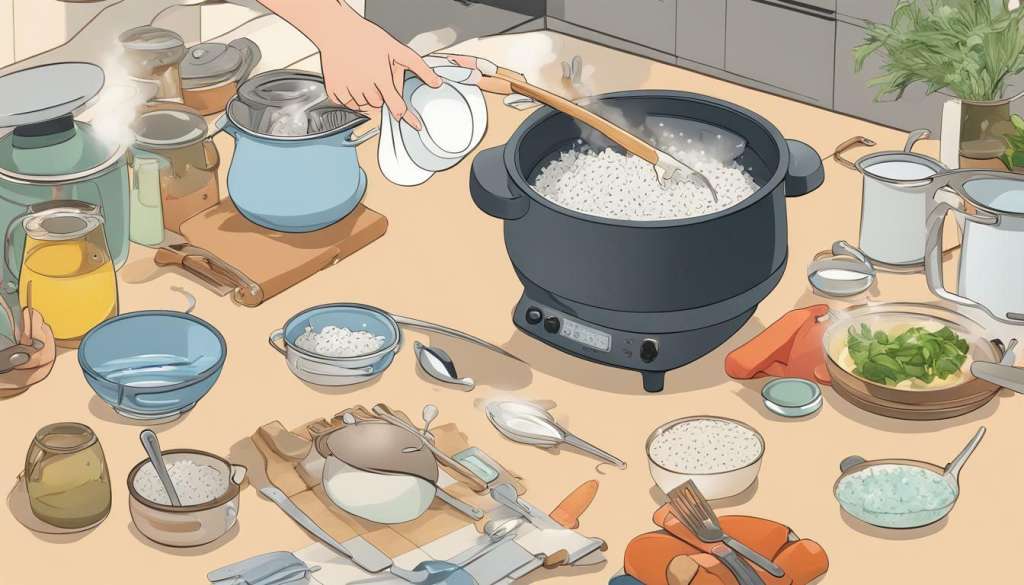
Follow these tips to prevent bubbling in your rice cooker and enjoy perfectly cooked rice every time.
Importance of Rice Cooker Maintenance
Regular maintenance is crucial in preventing rice cooker bubbling and ensuring optimal performance. Here are some tips to keep your rice cooker in top shape:
- Clean the rice cooker: After each use, wipe down the interior with a damp cloth and mild detergent. Avoid using abrasive cleaners that can damage the non-stick coating.
- Descale the rice cooker: Over time, mineral buildup can affect the performance of your rice cooker. To descale, fill the cooker with equal parts of water and white vinegar and run a full cycle. Rinse thoroughly with water.
- Inspect the gasket: The gasket is the rubber ring that provides a tight seal between the lid and the inner pot. Check for cracks or damage and replace if necessary.
- Check the rim: The rim of the inner pot can get scratched or dented over time, which can affect the seal. Inspect the rim for damage and replace if necessary.
By following these maintenance tips, you can ensure your rice cooker performs at its best and avoid common issues such as bubbling.
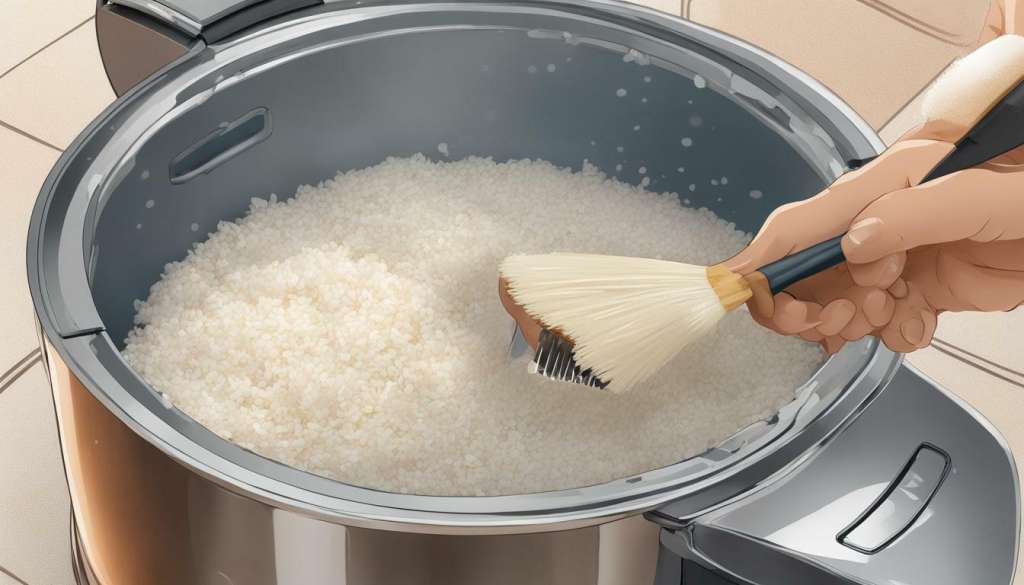
Tip: If you encounter any issues with your rice cooker despite proper maintenance, refer to the troubleshooting section for solutions.
Safety Features in Rice Cookers
Rice cookers are a convenient and easy way to cook perfect rice every time. However, they can sometimes be a potential hazard if not used correctly. That’s why rice cookers have different safety features to prevent accidents in the kitchen.
One of the most important safety features in rice cookers is the automatic shut-off function. This feature ensures that the cooker turns off automatically once the rice is fully cooked. This helps prevent overcooking and reduces the risk of fire hazards.
Another safety feature found in rice cookers is the pressure release valve. This valve helps to prevent pressure buildup, which can cause the cooker to explode. The valve allows for the steam to escape from the cooker, ensuring that the pressure is regulated.
Additionally, some rice cookers are equipped with a boil-over prevention feature, which keeps the water from bubbling over and spilling out of the cooker. This feature helps to prevent burns and scalds.
It’s important to understand the safety features in your rice cooker to ensure safe and efficient use. Always read the manufacturer’s instructions and follow the recommended guidelines.
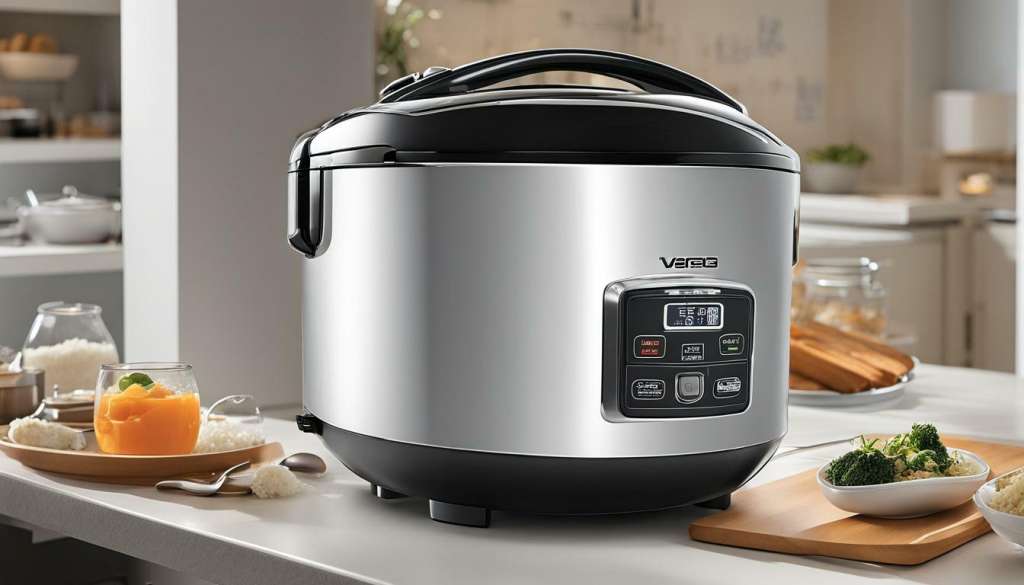
Expert Tips for Perfectly Cooked Rice
Aside from troubleshooting rice cooker issues, following expert tips can help ensure your rice comes out perfectly cooked every time. Here are some tips to keep in mind:
- Wash your rice: Rinsing your rice thoroughly can remove excess starch and improve the texture of your cooked rice.
- Measure your rice and water correctly: Using the correct rice-to-water ratio is crucial for preventing bubbling and achieving perfectly cooked rice. Refer to your rice cooker’s manual for the recommended ratios for different types of rice.
- Use the right cooking setting: Different types of rice may require different cooking settings. Familiarize yourself with your rice cooker’s settings and adjust accordingly.
- Avoid lifting the lid: Letting out steam by lifting the lid during the cooking process can affect the cooking time and water absorption, resulting in undercooked or overcooked rice.
- Allow rice to rest: Once the cooking process is complete, let the rice rest for a few minutes before fluffing it with a fork. This allows the rice to absorb any remaining moisture and ensures an evenly cooked batch.
Remember to always follow proper rice cooker maintenance practices, such as cleaning and descaling, to prevent any issues from arising. By implementing these expert tips and maintaining your rice cooker regularly, you can enjoy perfectly cooked rice every time.
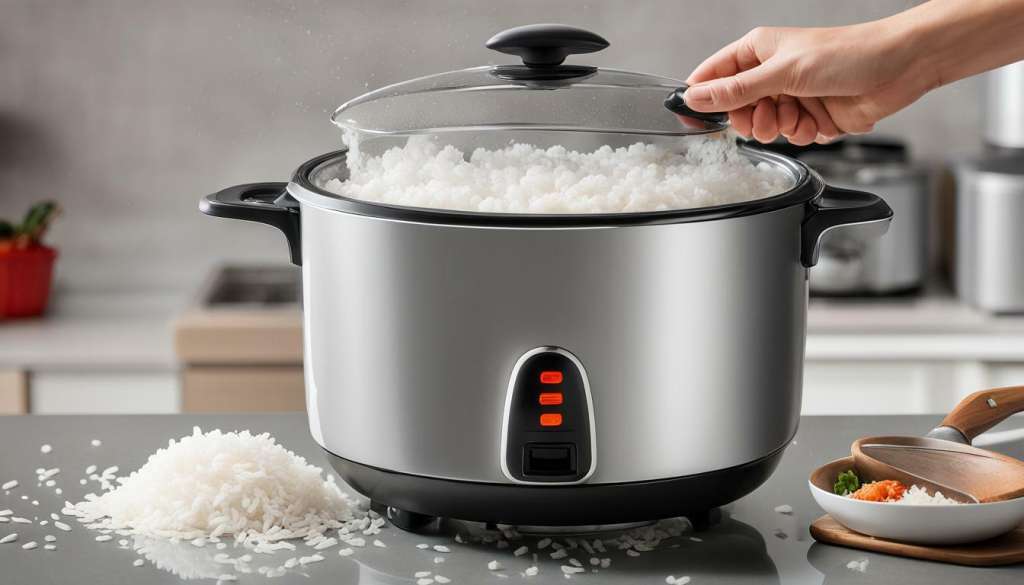
Preventing Rice Cooker Water Bubbling Over
If you’re experiencing water bubbling over in your rice cooker, fear not! There are several techniques you can use to prevent this issue and ensure perfectly cooked rice:
- Adjust water levels: Be mindful of the maximum water level indicated in your rice cooker and adjust accordingly. If you consistently experience bubbling over, try reducing the water level slightly.
- Use a timer: Set a timer for the last few minutes of the cooking cycle to prevent excess bubbling that may occur towards the end. This will also help you avoid overcooking your rice.
- Avoid rapid heat changes: Try not to lift the lid of your rice cooker frequently during cooking, as this can cause rapid heat changes and contribute to bubbling over. Also, avoid moving or shaking the rice cooker while in use.
By following these simple tips, you can eliminate the frustration of water bubbling over and achieve perfectly cooked rice every time.
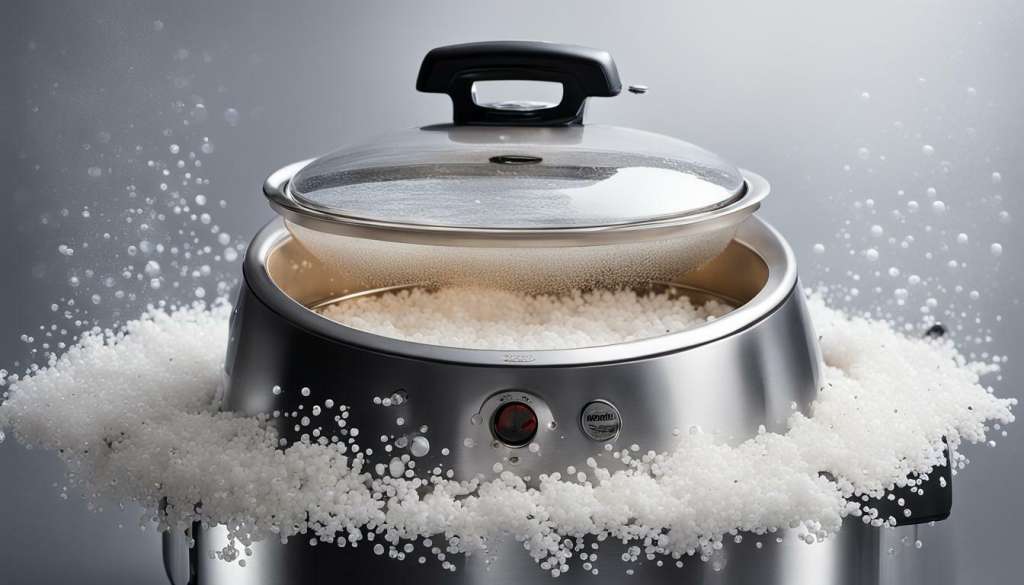
Adjusting Rice Cooker Settings
Adjusting the settings on your rice cooker can make all the difference in preventing bubbling and ensuring optimal cooking results. Different types of rice require specific settings, which can be adjusted on most rice cookers to ensure perfect rice every time.
Firstly, it’s important to note that different rice cookers may have varying settings. However, the common settings are White Rice, Brown Rice, Quick Cook, and Keep Warm. For most rice varieties, the White Rice setting is suitable.
If your rice cooker is bubbling excessively, lowering the temperature or decreasing the cooking time may help. Lowering the temperature will slow down the cooking process, allowing the rice to cook consistently without excess bubbling. Decreasing the cooking time will also prevent the rice from overcooking, which may cause it to stick and form clumps.
Expert Tip:
For best results, avoid opening the rice cooker while it’s cooking. Every time the lid is opened, heat and moisture escape, which can affect the cooking process and cause bubbling. Instead, wait until the rice cooker switches to the Keep Warm setting before opening the lid.
Adjusting rice cooker settings may take some trial and error to find the perfect combination for your favorite rice varieties. Be patient and keep testing until you find the ideal settings.
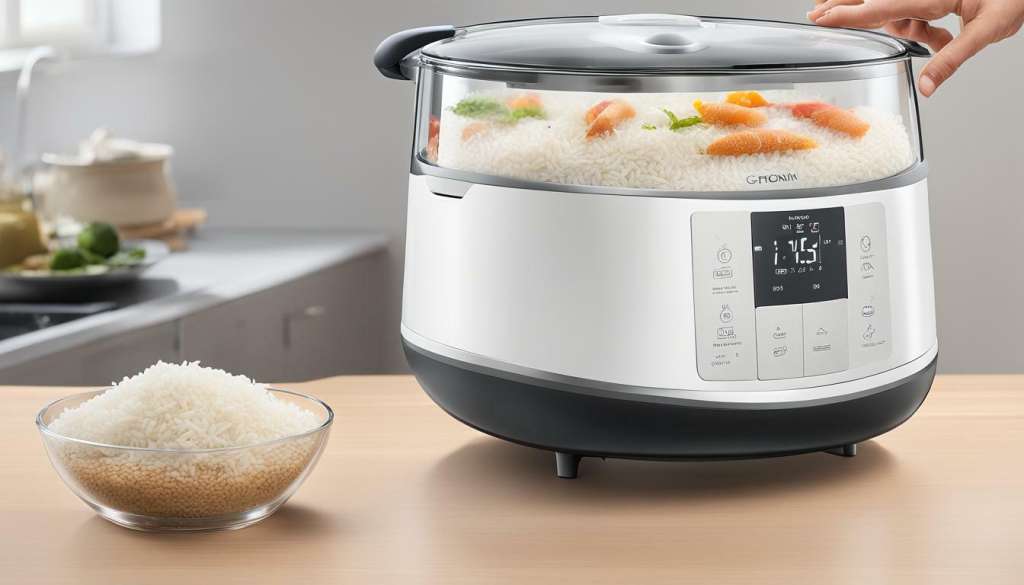
Using the Correct Rice-to-Water Ratio
One of the most common causes of rice cooker bubbling is an incorrect rice-to-water ratio. Adding too much water can cause the rice to boil over, resulting in a messy and potentially hazardous situation. On the other hand, adding too little water can cause the rice to undercook or burn. Therefore, it is crucial to measure the correct amount of water for different types of rice.
As a general guideline, use a ratio of 1:1.5 or 1:2 (rice to water) for most white rice varieties. For brown rice or wild rice, you may need to use a ratio of 1:2.5 or 1:3. Different rice cookers may have unique measurement markings, so make sure to follow the manufacturer’s instructions for measuring water.
While measuring the correct amount of water is essential, it is also crucial to remember that the quality of the rice and the age of the rice can affect the cooking process. Old or low-quality rice may require more water to cook properly. Additionally, rinsing the rice before cooking can also affect the required amount of water. It is crucial to experiment with different ratios and adjust according to the quality and type of rice you are using.
To prevent excess bubbling caused by improper ratios, always measure the rice and water accurately, and ensure the rice cooker’s lid is securely closed. Adjusting the rice-to-water ratio is just one of the many tips to ensure your rice turns out perfectly cooked and prevent rice cooker troubleshooting.
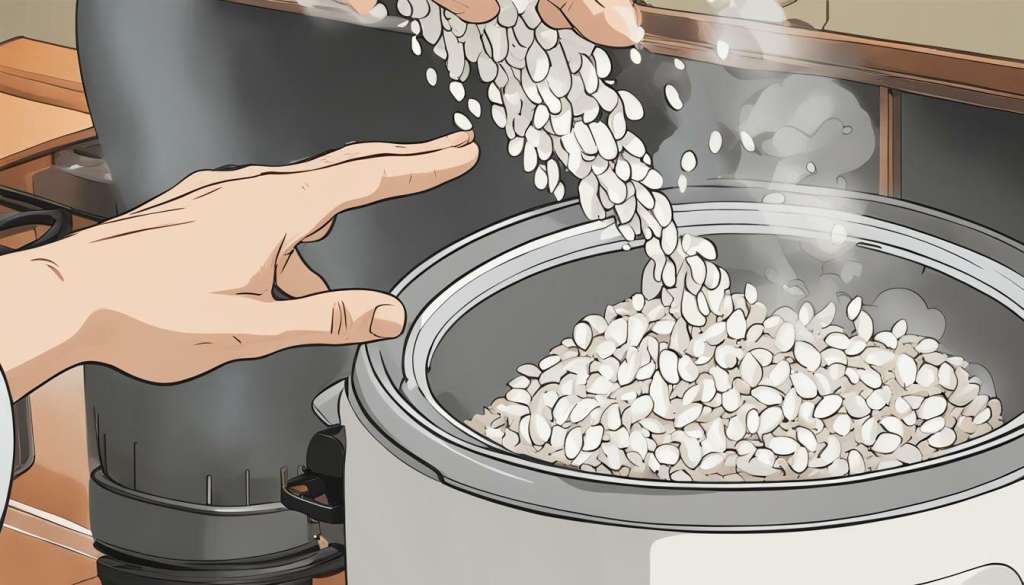
Importance of Using the Right Rice Cooker
Choosing the right rice cooker is crucial in preventing rice cooker troubleshooting, including bubbling issues. The size, features, and quality of the rice cooker are important factors to consider when selecting the right one for your needs.
Firstly, consider the size of the rice cooker. If you regularly cook rice for a large family or group, a larger rice cooker may be necessary to accommodate the quantity of rice. Conversely, if you only cook for yourself or a small family, a smaller rice cooker may suffice.
Secondly, consider the features of the rice cooker. Some rice cookers have more advanced features, such as multiple cooking settings or the ability to steam other foods. These features may be unnecessary for some users, but may be beneficial for others.
Lastly, consider the quality of the rice cooker. Cheaper or low-quality rice cookers may not work as effectively, leading to potential issues such as bubbling or uneven cooking. Investing in a high-quality rice cooker may prevent these issues and result in better-cooked rice overall.
It’s important to select the right rice cooker for specific rice varieties as well. For example, if you primarily cook brown rice, a rice cooker with a brown rice setting may be more effective than a standard setting. By selecting the appropriate rice cooker, you can prevent potential bubbling issues and ensure perfectly cooked rice every time.
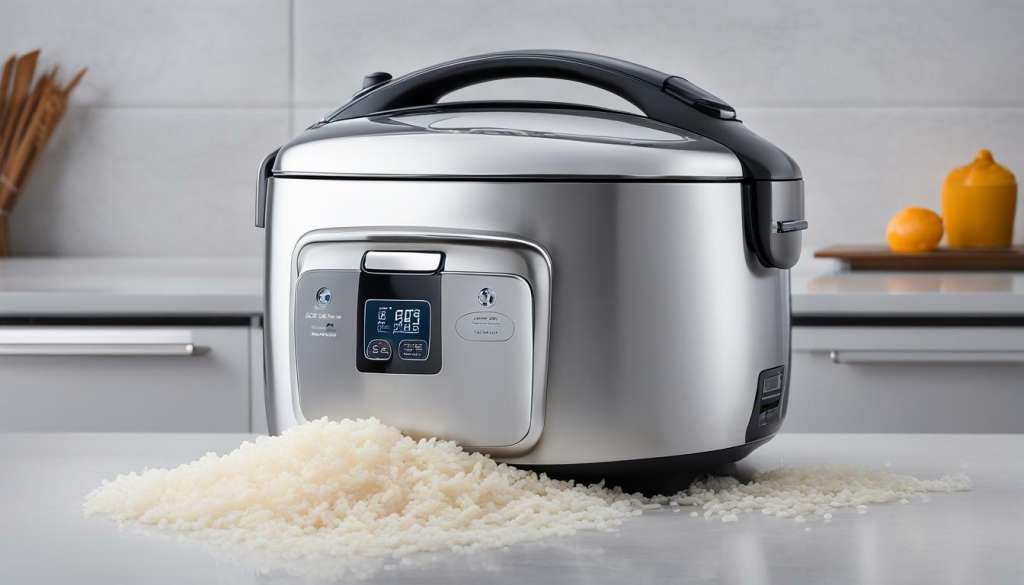
Keyword: rice cooker troubleshooting
Properly Sealing the Rice Cooker
One of the common causes of rice cooker bubbling is a faulty seal. A proper seal ensures that steam and pressure stay inside the cooker, leading to evenly cooked rice. Here are some tips to ensure a proper seal:
- Inspect the gasket: The gasket is a rubber ring that lines the lid of the rice cooker. If it is worn out or damaged, it can result in steam escaping and lead to bubbling. Make sure to inspect the gasket regularly and replace it if necessary.
- Clean the rim: A dirty rim can also cause a bad seal. Use a damp cloth to wipe the rim of the rice cooker before use.
- Use the correct lid placement: Make sure to align the lid properly before closing it. Improper lid placement can also cause steam to escape and lead to bubbling.
If you have a rice cooker with a faulty seal, it’s best to have it repaired or replaced. Continuing to use a faulty rice cooker can lead to further issues and potential safety hazards.
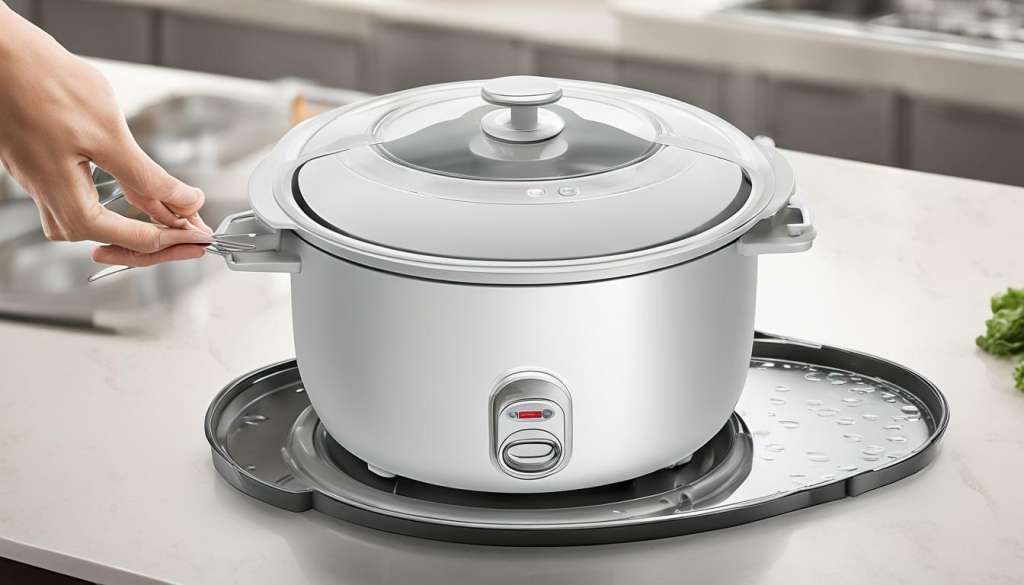
By ensuring a proper seal, you can prevent rice cooker bubbling and enjoy perfectly cooked rice every time.
Conclusion
In conclusion, rice cookers are designed to bubble during the cooking process. However, excessive bubbling can indicate underlying issues that may affect the cooking process and the quality of the rice. Understanding how rice cookers work, practicing proper maintenance, and following expert tips can help prevent excessive bubbling and ensure perfectly cooked rice every time.
Remember to adjust your rice cooker settings for different types of rice, measure the correct rice-to-water ratio, and properly seal the cooker. Regular maintenance, including cleaning and descaling, is also important to prevent bubbling issues.
Keep Learning and Experimenting
Continue to experiment with different rice varieties and cooking techniques to find what works best for you. If you encounter persistent bubbling issues despite following the above tips, consider consulting a professional or contacting the manufacturer for support.
Whether you’re a seasoned rice cooker pro or a beginner, maintaining your rice cooker and following expert tips can help you achieve perfectly cooked rice every time. Enjoy delicious, fluffy rice without the hassle of stovetop cooking!
FAQ
Q: Are rice cookers supposed to bubble?
A: Yes, it is normal for rice cookers to bubble during the cooking process. However, excessive bubbling can indicate underlying issues.
Q: How do rice cookers work?
A: Rice cookers work by using a combination of heat and water to cook rice. The cooker heats the water to boiling point, which creates steam. The steam then cooks the rice to perfection.
Q: What are the common causes of rice cooker bubbling?
A: Common causes of rice cooker bubbling include excess water, incorrect rice-to-water ratios, and faulty seals. These factors can affect the cooking process and result in excessive bubbling.
Q: Why is proper rice cooker maintenance important?
A: Proper rice cooker maintenance is important to prevent issues such as excessive bubbling. Regular cleaning, descaling, and inspection can help ensure the optimal performance of your rice cooker.
Q: What safety features do rice cookers have?
A: Rice cookers are equipped with various safety features, including automatic shut-off and pressure release valves. These features help prevent potential hazards and ensure safe operation.
Q: What are some expert tips for perfectly cooked rice?
A: To achieve perfectly cooked rice, consider adjusting rice cooker settings, following proper rice preparation techniques, and using recommended cooking times for different types of rice.
Q: How can I prevent water from bubbling over in my rice cooker?
A: To prevent water from bubbling over, adjust water levels, use a timer, and avoid rapid heat changes during the cooking process. These techniques help maintain a controlled cooking environment.
Q: Can adjusting rice cooker settings prevent bubbling?
A: Yes, adjusting rice cooker settings can help prevent bubbling. By selecting the appropriate temperature settings, cooking times, and water measurements, you can achieve optimal cooking results.
Q: What is the correct rice-to-water ratio for different types of rice?
A: The correct rice-to-water ratio varies for different types of rice. It is important to measure the correct amount of water to prevent excessive bubbling caused by improper ratios. Refer to cooking instructions or online resources for specific ratios.
Q: How can using the right rice cooker prevent bubbling issues?
A: Using the right rice cooker for your needs, including considering factors such as size, features, and quality, can help prevent bubbling issues. Different rice cookers may have specific settings or functions that aid in controlling the cooking process.
Q: How do I properly seal my rice cooker?
A: To properly seal your rice cooker, inspect the gasket for any damage or wear, clean the rim of the cooker to ensure a tight seal, and ensure correct lid placement. Proper sealing helps control bubbling and ensures optimal cooking results.

